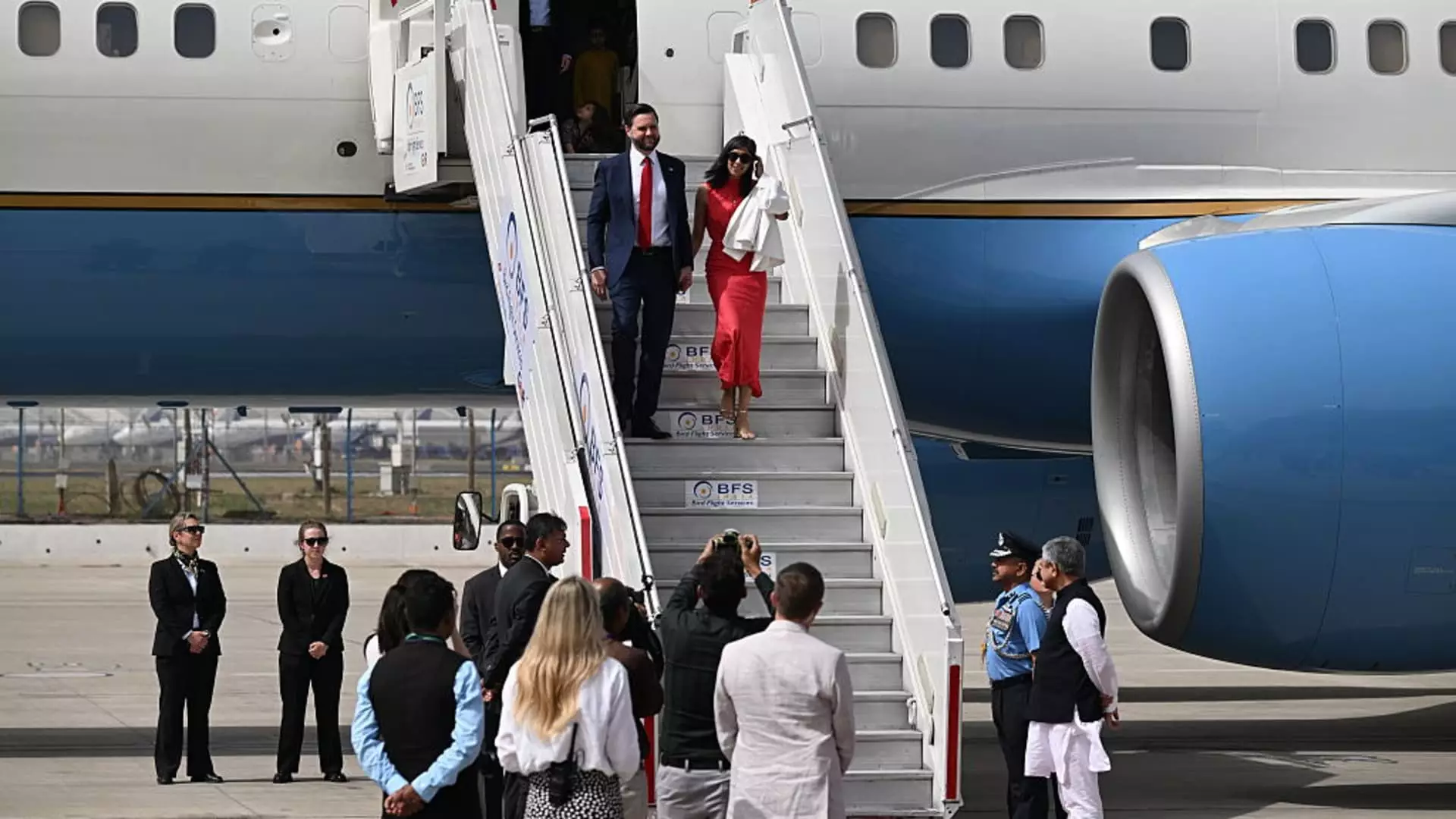Vice President JD Vance’s recent trip to India wasn’t merely a diplomatic undertaking; it was also a celebration of personal heritage. With his wife Usha, who is the daughter of Indian immigrants, accompanying him, Vance’s journey encompasses his family’s legacy while functioning as a conduit for U.S.-India relations. This multifaceted visit highlights how personal backgrounds can intertwine with political narratives to foster stronger international connections. While enjoying the majesty of the Taj Mahal and the vibrant culture of Jaipur, Vance’s presence symbolizes an important bridge between two nations where policies and traditions converge.
Navigating Complex Trade Dynamics
The strategic timing of Vance’s visit comes amid escalating tensions between the U.S. and China, placing India in a poignant position in U.S. foreign policy. The prevailing sentiment that India is a “tariff king” hovers over the discussions, complicating trade negotiations. What’s astonishing is Vance’s role in navigating through these murky waters. His framework for discussions with Prime Minister Modi aims at not only addressing tariff disputes but also promotes a landscape of fairness, which echoes the sentiments of many in the center-left who advocate for equitable trade policies. Yet, the real challenge lies in translating this diplomatic dialogue into actionable, mutually beneficial agreements.
The Burgeoning U.S.-India Trade Relationship
With bilateral trade peaking at a staggering $129 billion in 2024, the U.S. remains India’s largest trading partner, a fact that underscores the urgency of these talks. A precarious surplus of $45.7 billion firmly favors India and invites criticism regarding the balance of trade. Herein lies a modern dilemma: while economic alliances continue to deepen, the broader question of fairness persists. The expectation for a swift trade deal, especially one that trims tariffs on U.S. imports, reveals the importance of maintaining stability in an otherwise fluctuating global economic environment.
Defence Collaboration: A Force for Stability
Integral to Vance’s discussions with Modi is the topic of defense collaboration, an area where both entities are keen to enhance partnership. The proposed framework for defense cooperation suggests an increasing recognition of shared security interests, particularly in light of growing geopolitical instability in the Indo-Pacific region. Strategic acquisitions of Javelin anti-tank guided missiles and Stryker infantry vehicles signify an urgent pivot toward military compatibility. Crucially, Vance’s role in setting a tone for future defense initiatives underscores the necessity for the United States to present itself as a committed ally, not just a transactional partner.
Future Implications of Vance’s Visit
What remains to be seen is whether Vance’s diplomatic charm will have lasting significance beyond mere meetings and discussions. His partnership with PM Modi is poised to sculpt the future of U.S.-India relations, especially in the context of a looming summit involving Quad nations. The Indian government’s eagerness for a robust alliance with the U.S., coupled with Vance’s noticeable diplomatic leverage, suggests potential for transformative outcomes that might reshape international relations in the coming years.
As observers note, while the U.S. has positioned itself as a critical ally against the backdrop of a rising China, the complexities of tariff negotiations continue to pose significant hurdles for long-term partnership sustainability. However, Vance’s engagement may offer India a pathway to exert influence, both regionally and with the U.S., thereby redefining how economic power dynamics play out on the global stage. The implications of this visit extend far beyond transactional diplomacy; it speaks to a broader vision of what collaborative international relations can achieve when they are rooted in shared democratic values and mutual respect.
Vance’s trip could be more than an exercise in political theater; it represents a hallway of potentiality, where personal histories and political ambitions intertwine to craft the narrative for an ever-evolving partnership. In a world fraught with conflict and division, this visit stands as a needed reminder of the possibilities that lie within strategic alliances, especially when they are founded on the principles of fairness and mutual benefit.


Leave a Reply